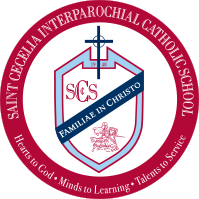Pre-K through Eighth grade students experience the Visual Arts within a positive and motivating atmosphere that focuses on creativity, uniqueness and problem-solving through art. Students apply their knowledge of the Elements of Art and the Principles of Design through the execution of an ever-changing variety of mediums. They learn about different art styles and famous artists, both historical and contemporary, and engage in the tangible making of art. In an increasingly digital world, students have opportunities to make, build, and manipulate a multitude of tools and media with their whole hand.
The Visual Arts teacher collaborates with the classroom teachers to connect projects to the core subject curriculum and the world outside of the classroom.


